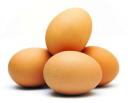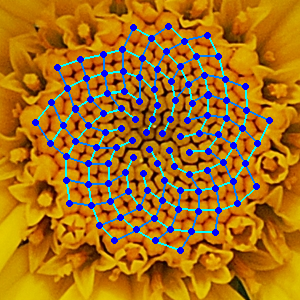 We eat them cooked any one of half a dozen ways in the morning. We use them in cakes and cookies and as a meringue on lemon pies. The particularly ambitious cook may use them in a mousse or a soufflé. (For eggs in cooking, revisit Physics in the Kitchen.) But have you ever stopped to think about how amazing the egg really is?
We eat them cooked any one of half a dozen ways in the morning. We use them in cakes and cookies and as a meringue on lemon pies. The particularly ambitious cook may use them in a mousse or a soufflé. (For eggs in cooking, revisit Physics in the Kitchen.) But have you ever stopped to think about how amazing the egg really is?
We all know that eggs should be handled carefully because their shells are incredibly thin. Drop an egg a short distance and you have a gooey mess to clean up. One simple tap on the edge of the counter is enough to crack open the shell. But try this experiment: hold an egg in the palm of your hand and curl your fingers around it. Now squeeze with all your might.
Did it break? If you didnt believe me and didnt squeeze with all your strength, go back and try again.
What on Earth ? The key to an eggshells strength is the fact that its whole surface is curved. The strongest shape is a sphere, and an egg is a close approximation of this. (The reason its not exactly a sphere in just a moment.) With no corners or flat sides to weaken it, the forces you apply to the egg by curling your fingers around it are distributed equally over the egg rather than concentrating at any one point.
This works even in the following way. Hold the top and bottom of the egg with your thumb and forefinger and squeeze. Did it break this time? In physics terms, we say that the egg has a high compression strength youre compressing the egg, but it doesnt break! In fact, an egg has such high compression strength, that (with the proper setup) it can support the weight of a small person without breaking.
So why arent eggs spherical? The oval shape is created as the bird lays it, and this turns out to be an advantage for the hen. The shape prevents the eggs from rolling away! Spherical eggs would roll and roll and roll and never return. For birds like ostriches that nest on the ground, this isnt an issue, and their eggs are generally more spherical. But birds that nest on cliffs often lay very conical eggs, which roll in a tight circle around the narrow end and remain on the ledge.
What else? How can you tell if your egg is fresh? Eggs contain an air pocket that forms when its contents shrink as it cools after being laid. As the egg ages, moisture evaporates and the air cell grows larger, reducing the average density of the egg. An object floats in a liquid if it is less dense than the liquid and an object denser than the liquid sinks. We can therefore use the eggs density as a handy measure of the eggs freshness! Heres how it works. Place your egg in a container of water. A fresh egg with a small air pocket will rest horizontally on the bottom. The air pocket in a 1-week-old egg is slightly larger its density is less and the end will hover slightly off the bottom, and an egg thats 2-3 weeks old even less dense will rest vertically on the bottom. Dont eat any eggs that float!
Now that you know so much about eggs, heres a bonus question: what do eggs and Roman arches have in common?
PS. When squeezing your egg: dont wear any rings, and make sure your egg doesnt have any cracks already. My research egg was blessed with a crack and I ended up with a handful of broken shell and raw egg oozing between my fingers and onto the floor!

